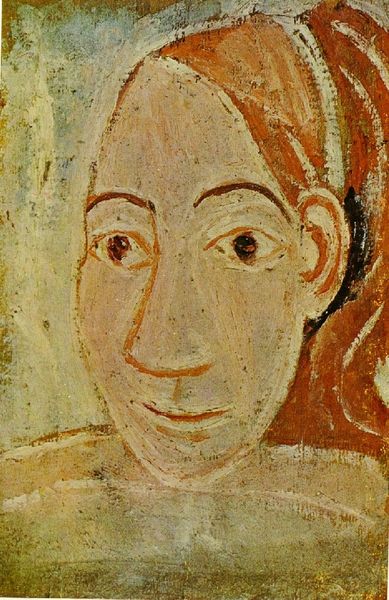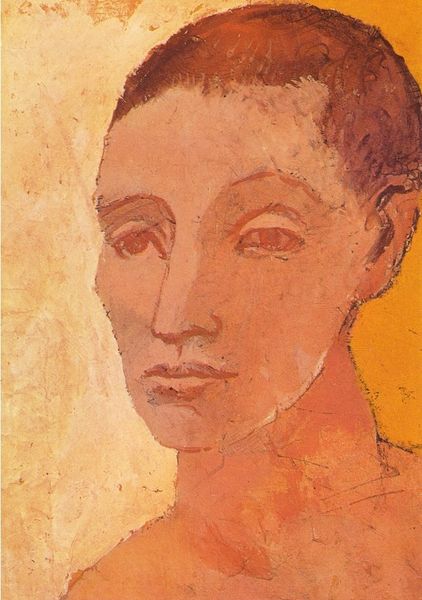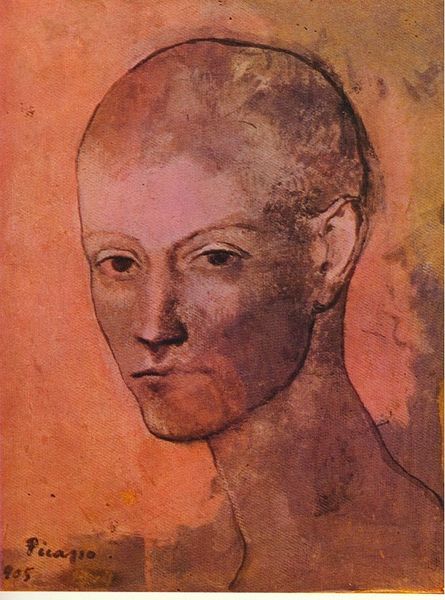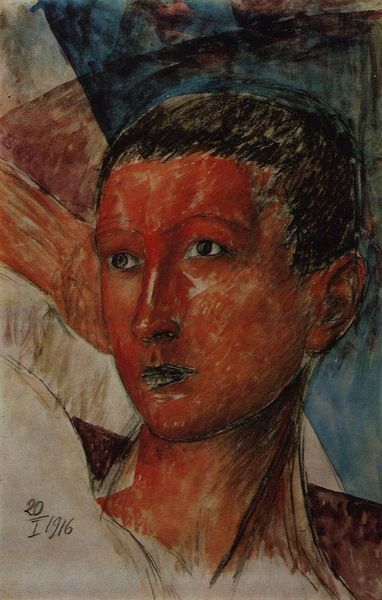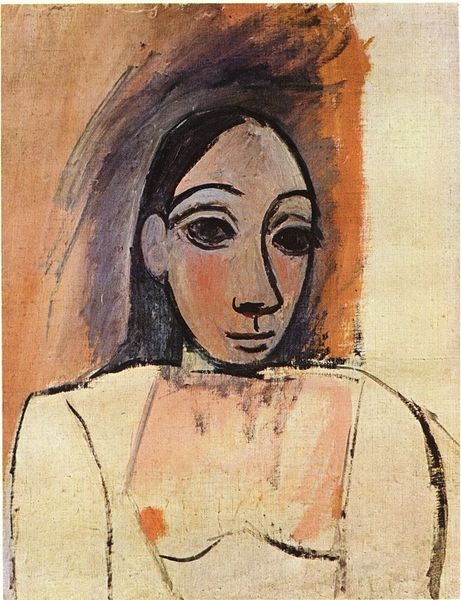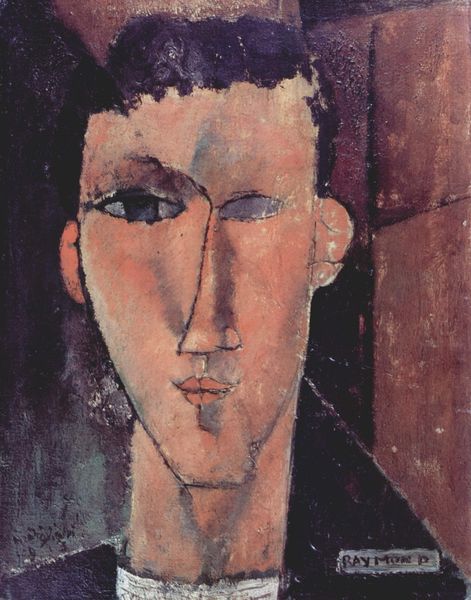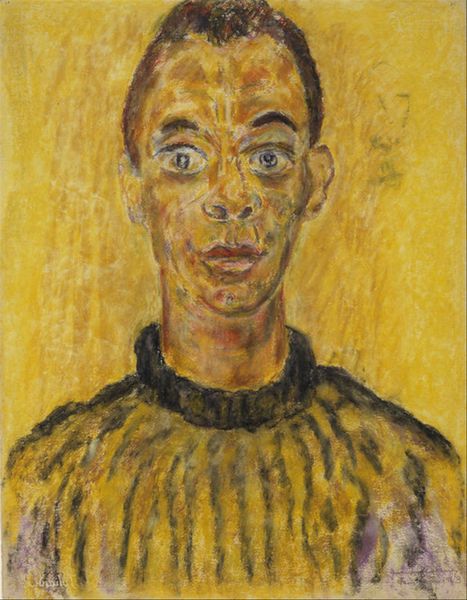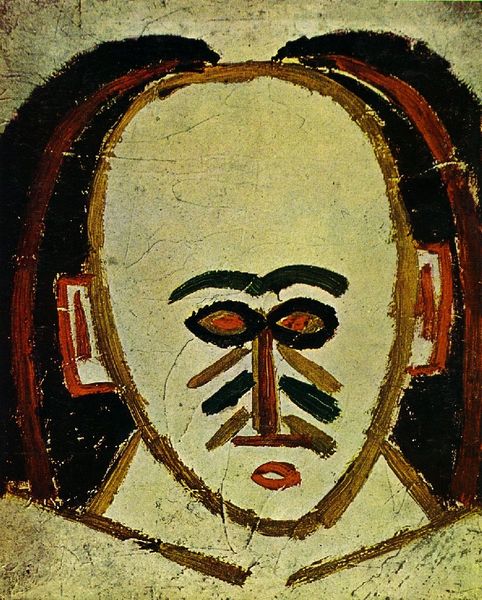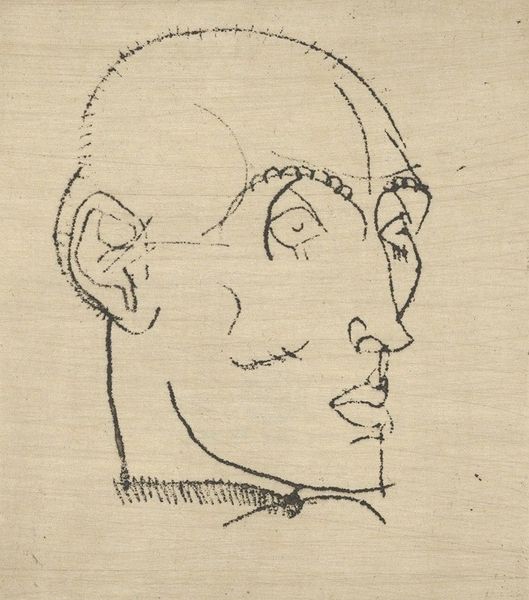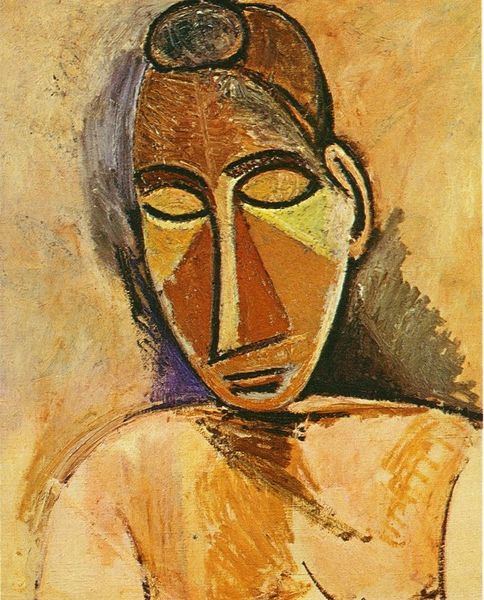
painting, oil-paint
#
portrait
#
self-portrait
#
head
#
face
#
painting
#
oil-paint
#
possibly oil pastel
#
oil painting
#
portrait reference
#
famous-people
#
male-portraits
#
acrylic on canvas
#
expressionism
#
animal drawing portrait
#
nose
#
portrait drawing
#
facial portrait
#
forehead
#
portrait art
#
fine art portrait
#
digital portrait
Dimensions: 39 x 30 cm
Copyright: Public domain US
Curator: Before us is a self-portrait by Pablo Picasso, executed in 1906 using oil paint. Editor: My immediate reaction is to its stark simplicity. The palette is muted, almost monochromatic, giving it a rather raw, vulnerable feel. Curator: That's interesting. Historically, 1906 marks a significant turning point in Picasso's career, falling within his so-called "Rose Period" but also anticipating his engagement with Iberian sculpture and, soon after, the development of Cubism. Editor: I see a directness that speaks volumes, even though it lacks flamboyant colours or elaborate details. Look at the unflinching gaze. It almost feels like he's challenging the viewer, confronting them. Given the historical context, it makes me consider masculinity and how Picasso performed that in the early 20th Century, especially as a Spanish expatriate in Paris. Was this image deliberately austere, meant to be read as a declaration of identity? Curator: Precisely. The pared-down aesthetic could be interpreted as a rejection of prevailing academic styles, a move toward a more 'primitive' mode of representation. And let's not forget, there's a lot of debate surrounding cultural appropriation at the time in relation to Picasso’s Primitivism. Editor: The muted tones remind me of clay or earth, tying it to something ancient. Do you think the monochromatic color selection was to emphasize this reference, perhaps tying his artistic identity to his historical one? It's fascinating how the portrait doesn’t just represent a likeness, but an assertion of artistic identity and heritage during a transitional era for him. Curator: Absolutely, it’s like he’s grounding himself, using his heritage as a foundation for the revolutionary path he's about to take. Considering art’s role within increasingly global contexts, a reading that moves through gender, ethnicity and nationhood feels absolutely correct. Editor: It’s a complex work, filled with these types of tensions, made even more interesting through his unique artistic journey. Curator: Indeed, the painting prompts contemplation regarding how personal and collective identity intersects within the realm of artistic expression and evolution.
Comments
No comments
Be the first to comment and join the conversation on the ultimate creative platform.

